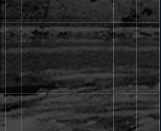|
Castaño
claims that 1000 former army officers and soldiers, including many
dismissed from the Colombian army for what are officially described
as "disciplinary problems," now serve in AUC ranks. Many
have signed up to be commanders. AUC forces now operate, virtually
at will, in 26 of Colombia's 32 provinces and maintain a permanent
presence in over 400 of Colombia's nearly 1000 municipalities. Within
the last two years, they have extended their operational capacity
from their traditional stronghold in the north, south to Putumayo
and the Ecuadorian border, and east to Colombia's border with Venezuela.
Castaño told "El Mundo" in May that the
AUC is active in 70% of Colombia's territory.
TERROR AS A MILITARY
STRATEGY
In the language of García Márquez, every massacre
is "foretold." The population in the location selected
for the next attack always receives advance threats (via flyers,
graffiti, and word of mouth) in a process Colombian peasants refer
to as "the witches' postal service," ("el correo
de las brujas.")
Then the death squad arrives. Heavily armed men in trucks arrive
at the selected location by day or by night and block all entry
and exit points. Next, they assemble the population in some central,
public place, usually in the town square, and the informant, a hooded
figure, bearing a list of names, moves silently among the crowd,
selecting individuals for the coming slaughter, pointing them out
with his finger. The informant, usually a neighbor, someone known
to the community, identifies those henceforth defined as "guerrilla-auxiliaries."
To be an auxiliary, it suffices to have sold something to a guerrilla,
to have taught a kid who joined the rebel ranks, to have lost one's
identification papers, or even to be wearing the wrong kind of clothing.
When the informant's work is done, the condemned men and women are
taken to the place of torture and execution while the population
is forced to witness the agony of their neighbors and relatives.
When the killing ends, the withdrawal of the death squad also follows
a pattern. Frequently they force one of the village women to cook
and feed them a meal. Before leaving, they loot, set fire to some
of the houses, and warn the survivors that they will be back, to
finish a work in process.
"The "Chainsaw Massacre" is for real in Colombia,"
a shaken Ernesto Cifuentes, the People's Advocate, told Colombian
reporters on his return from the site of a recent paramilitary atrocity.
During Holy Week, an estimated 200 AUC paramilitaries went on a
killing spree in twelve, impoverished Indian and Afro-Colombian
farming communities, located in an isolated and abandoned region
of southwestern Cauca, along the river Naya. Cifuentes, a conservative
former Constitutional Court judge, had accompanied judicial officials
who were only able to reach the scene in army helicopters.
Dazed with shock, the officials wandered amid the burnt and looted
ruins that had been home for the 20 or more victims, whose bodies
and parts of bodies they scooped up from fields and streams, loaded
into nets hung beneath the helicopters, and took away. Many had
been beheaded with machete strokes. Others had been mutilated and
killed with chainsaws. The authorities were unable to reach more
distant hamlets, where survivors insisted more bodies of their friends
and neighbors would yet be found. There are no roads in the Naya.
|
|

